These are the stories to close out this week...
Have a safe weekend!
Tom
Passenger plane crashes in Russia’s Far East, killing all 48 people on board, officials say
AP
MOSCOW — A passenger plane crashed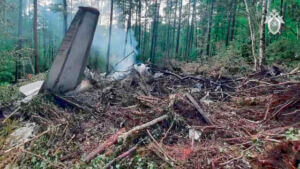 Thursday in Russia’s Far East, killing all 48 passengers and crew on board, officials said.
Thursday in Russia’s Far East, killing all 48 passengers and crew on board, officials said.
The Angara Airlines flight disappeared from radar, and searchers later found the burning wreckage of the plane on a hillside south of its planned destination in Tynda, more than 4,350 miles east of Moscow, Russia’s Emergency Situations Ministry said.
Regional Gov. Vasily Orlov said in a statement that all 48 people aboard were dead, and announced three days of mourning in the Amur region over what he called a “terrible tragedy.”
It wasn’t immediately clear what caused the crash.
Russia’s Interfax news agency said there were adverse weather conditions at the time of the crash, citing unnamed sources in the emergency services. Several Russian news outlets also reported that the aircraft was almost 50 years old, citing data taken from the plane’s tail number.
The Soviet-designed twin turbo prop plane had initially departed from Khabarovsk before making its way to Blagoveshchensk on the Russian-Chinese border and onwards to Tynda.
Images of the reported crash site circulated by Russian state media show debris scattered among dense forest, surrounded by plumes of smoke.
Orlov said rescuers had struggled to reach the site due to its remote location, 9 miles south of Tynda.
the site due to its remote location, 9 miles south of Tynda.
An earlier statement from the governor said that 49 people had been onboard the flight, but that number later was updated to 48. The reason for the discrepancy was not immediately clear.
The transport prosecutor’s office in the Far East said in an online statement that the plane was attempting to land for a second time when it lost contact with air traffic control and disappeared from radars.
The authorities launched a probe on the charge of flight safety violations that resulted in multiple deaths, a standard procedure in aviation accidents.
Aviation incidents have been frequent in Russia, especially in recent years as international sanctions have squeezed the country’s aviation sector.
Passenger plane crashes in Russia’s Far East, killing all 48 people on board, officials say
Alaska Airlines jet hits deer on runway in Kodiak
By Suzanne Downing
An Alaska Airlines Boeing 737 struck at least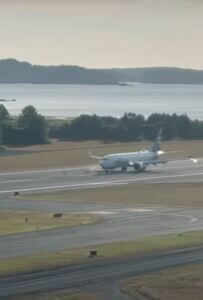 two deer—possibly three—while landing at Kodiak Airport on Thursday morning, damaging the aircraft’s landing gear and prompting the cancellation of all scheduled passenger flights for the remainder of the day.
two deer—possibly three—while landing at Kodiak Airport on Thursday morning, damaging the aircraft’s landing gear and prompting the cancellation of all scheduled passenger flights for the remainder of the day.
The incident occurred around 8 a.m. as the aircraft was completing its landing rollout. Despite the unusual runway hazard, the plane was able to taxi safely to the terminal, and there were no injuries reported among passengers or crew.
The collision caused damage to the plane’s landing gear, which will be repaired locally in Kodiak. In the meantime, operations were temporarily suspended, and passengers scheduled to travel to or from the island were being rebooked on alternate flights.
In November of 2020, an Alaska Airlines Boeing 737-700 struck and killed a brown bear sow during landing at the Yakutat airport.
https://mustreadalaska.com/dramatic-video-alaska-airlines-jet-hits-deer-on-runway-in-kodiak/
Engine malfunction leads pilot to make emergency landing at Ankeny golf course, police say
The Federal Aviation Administration is on scene to help remove the plane.
Author: Emma Brustkern
ANKENY, Iowa — A small plane made an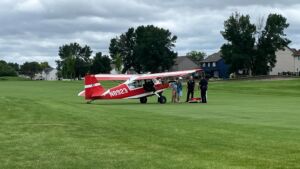 emergency landing at an Ankeny golf course Thursday morning, Ankeny police said in a Facebook post.
emergency landing at an Ankeny golf course Thursday morning, Ankeny police said in a Facebook post.
Police shared that the aircraft experienced an engine malfunction while flying, leading the pilot to make an unexpected landing at Briarwood Golf Club near the 12th hole.
No injuries were reported. The Federal Aviation Administration is on scene to help remove the plane.
FAA Delays Secondary Cockpit Barrier Mandate
The FAA has delayed a rule requiring secondary cockpit barriers on new U.S. passenger planes, originally set to take effect in August.
By Amelia Walsh
The Federal Aviation Administration has pushed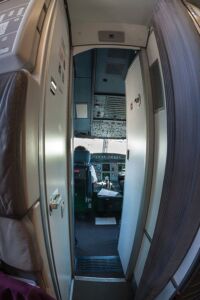 back the deadline for U.S. airlines to install secondary cockpit barriers by one year, the agency announced this week.
back the deadline for U.S. airlines to install secondary cockpit barriers by one year, the agency announced this week.
The rule, introduced in 2023, mandates that new commercial aircraft include an additional physical barrier to secure the flight deck when the cockpit door is open. It was originally slated to take effect in August 2025, but now has a 2026 compliance deadline, according to a Reuters report.
Airlines for America—the trade group representing major carriers including American Airlines, United Airlines and Delta Air Lines—has requested a two-year postponement, citing several critical implementation challenges, including that the FAA has not yet certified any secondary cockpit barrier designs, and no associated manuals, procedures or training programs have been authorized.
“This will allow time to facilitate FAA certification and install the barriers,” the agency stated in its announcement of the revised timeline.
Meanwhile, the Air Line Pilots Association (ALPA) has strongly opposed the delay, urging the FAA last month “to reject this latest stalling tactic.” The union advocates for the prompt installation of what they describe as “lightweight, retractable security gates” to enhance pilot protection.
The union has been a vocal proponent of the rule, pointing to statistics showing at least 52 hijacking attempts worldwide since 2001, Reuters noted.
The yearlong extension is a compromise between immediate implementation and the longer delay requested by airlines.
https://avweb.com/aviation-news/faa-delays-secondary-cockpit-barrier-mandate/?oly_enc_id=3681J3205156A2X
NTSB Final Report: Schweizer SGS 1-26C
Glider Overran The Departure End Of The Runway And Impacted Terrain
Location: Hampshire, Illinois Accident Number: CEN25LA202
Date & Time: June 1, 2025, 15:00 Local Registration: N9839E
Aircraft: Schweizer SGS 1-26C Aircraft Damage: Substantial
Defining Event: Runway excursion Injuries: 1 None
Flight Conducted Under: Part 91: General aviation - Personal
Analysis: The pilot reported that while maneuvering the glider for landing on runway 27, he encountered unexpected lift and then used a side slip maneuver to descend. He descended too low to continue the approach, so he maneuvered to land on runway 9 and landed about two-thirds of the way down the runway. The glider overran the departure end of the runway and impacted terrain, resulting in substantial damage to the left wing. The pilot reported that there were no preaccident mechanical malfunctions or failures with the glider that would have precluded normal operation.
Probable Cause and Findings: The National Transportation Safety Board determines the probable cause(s) of this accident to be -- The pilot’s failure to maintain a proper altitude during the approach, which resulted in overshooting the landing area, a runway excursion, and impact with terrain.
FMI: www.ntsb.gov
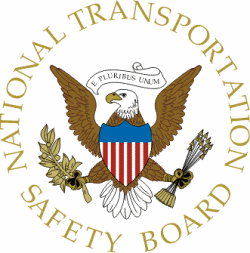
Today in History
25 Years ago today: On 25 July 2000 Air France flight AF4590, a Concorde jet, crashed immediately after takeoff from Paris-Charles de Gaulle Airport, France, killing all 109 occupants and 4 persons on the ground.
| Date: | Tuesday 25 July 2000 |
| Time: | 16:44 |
| Type: | Aérospatiale / BAC Concorde 101 |
| Owner/operator: | Air France |
| Registration: | F-BTSC |
| MSN: | 203 |
| Year of manufacture: | 1975 |
| Total airframe hrs: | 11989 hours |
| Cycles: | 4873 flights |
| Engine model: | Rolls-Royce Olympus 593/610 |
| Fatalities: | Fatalities: 109 / Occupants: 109 |
| Other fatalities: | 4 |
| Aircraft damage: | Destroyed, written off |
| Category: | Accident |
| Location: | Gonesse - France |
| Phase: | Initial climb |
| Nature: | Passenger - Non-Scheduled/charter/Air Taxi |
| Departure airport: | Paris-Charles de Gaulle Airport (CDG/LFPG) |
| Destination airport: | New York-John F. Kennedy International Airport, NY (JFK/KJFK) |
| Investigating agency: | BEA |
| Confidence Rating: | Accident investigation report completed and information captured |
Narrative:
Air France flight AF4590, a Concorde jet, crashed immediately after takeoff from Paris-Charles de Gaulle Airport, France, killing all 109 occupants and 4 persons on the ground.
The Air France Concorde, registered F-BTSC, was to depart Paris-Charles de Gaulle for a flight (4590) to New York-JFK. Departure was delayed by about one hour because the crew had requested a replacement of the thrust reverser pneumatic motor of the no. 2 engine. Also, the rear bogie truck of the left hand main undercarriage was replaced. When all 100 passengers had boarded, the plane taxied to runway 26R (4217 m long). Takeoff weight was calculated to be 186,9 tons, including 95 tons of fuel, which was one tone over the maximum takeoff weight. At 14:42:17 the crew were cleared for takeoff.
At 14:42:31, the captain commenced takeoff. At 14:42:54.6, the co-pilot called one hundred knots, then V1 nine seconds later. A few seconds after that, tyre No 2 (right front) on the left main landing gear was destroyed after having run over a strip of metal lost by a Continental Airlines DC-10-30, registered N13067 which departed Paris as flight 055 to Newark five minutes before. The destruction of the tyre in all probability resulted in large pieces of rubber being thrown against the underside of the left wing and the rupture of a part of tank 5. A severe fire broke out under the left wing and around the same time engines 1 and 2 suffered a loss of thrust, severe for engine 2, slight for engine 1. By 14:43:13, as the captain commenced the rotation, the controller informed the crew the presence of flames behind the aircraft. The co-pilot acknowledged this transmission and the flight engineer announced the failure of engine no. 2. Nine seconds later the engine fire alarm sounded and the flight engineer announced "shut down engine 2" then the captain called for the "engine fire" procedure. A few seconds later, the engine 2 fire handle was pulled and the fire alarm stopped. The co-pilot drew the captain's attention to the airspeed, which was 200 kt. At 14:43:30, the captain called for landing gear retraction. The controller confirmed the presence of large flames behind the aircraft. Twelve seconds later the engine fire alarm sounded again for around 12 seconds. It sounded for the third time at about 14:43:58 and continued until the end of the flight. At 14:43:56, the co-pilot commented that the landing gear had not retracted and made several callouts in relation to the airspeed. Three seconds later, the GPWS alarm sounded several times. The co-pilot informed ATC that they were trying for Le Bourget aerodrome. Then the number 1 engine lost power as well. The aircraft entered a left turn until control was lost, crashing into hotel 'Hotellisimo' and bursting into flames.
PROBABLE CAUSE:
- High-speed passage of a tyre over a part lost by an aircraft that had taken off five minutes earlier and the destruction of the tyre.
- The ripping out of a large piece of tank in a complex process of transmission of the energy produced by the impact of a piece of tyre at another point on the tank, this transmission associating deformation of the tank skin and the movement of the fuel, with perhaps the contributory effect of other more minor shocks and /or a hydrodynamic pressure surge.
- Ignition of the leaking fuel by an electric arc in the landing gear bay or through contact with the hot parts of the engine with forward propagation of the flame causing a very large fire under the aircraft's wing and severe loss of thrust on engine 2 then engine 1.
In addition, the impossibility of retracting the landing gear probably contributed to the retention and stabilisation of the flame throughout the flight.
